I’d arranged to meet Richard Lawrence at his studios in Hurst Street, a short cycle ride east from Oxford’s Magdalen Bridge. There’s a yard at the front, so disconcertingly full of objects covered in tarpaulin that I consider at first that I may have come to the wrong address. But his name, albeit faded, is on the door and as it is ajar, in I go.
I find him just inside sifting through the contents of a shallow box. He is a tall man, so he has to stoop to see the variety of letters in front of him. Not written missives you understand, but something just as out of vogue, type or sorts, the small metal typographical characters used to print text in the old-fashioned way. On big, heavy, workhorse machines as it had been done for hundreds of years before computers and digitisation took over. This is the world of letterpress printing.
Richard’s passion for it began at the age of 13.
“I went to a minor public methodist school in Cambridge and one of the things they kept the boys occupied with was printing and I took to it. It wouldn’t be allowed these days for health and safety reasons. But it was such fun,” he says, now in his mid- 60’s, leading me through to his down stairs workshop, one of five in the building he renovated and now shares with six artists working in a variety of print mediums. The place was once used as stables for the local dairy when milk was delivered by horse and cart, and is around the corner from where William Morris (the car man not the designer) opened his first business repairing bikes from a shed in James Street. I passed the blue plaque on my way here. It is pleasing to know that Richard and his friends are continuing that tradition of service, of trade and of making and doing.
“It may look like a tip, but this is where I work,” he smiles wryly as he shows me round.
A lifetime’s collection of print-related paraphernalia fills the space. As well as assorted machinery there are hundreds of cases (the name from which upper and lower case is derived, capitals being kept above the minuscules below). These hold type of all shapes and sizes, some tiny and cast out of metal, others as large as one foot in height for use on posters and displays and carved out of wood. Many date back to his undergraduate days when he’d catch a train to London from Cambridge, cycle over to the foundry offices in Fleet Street, load up his rucksack and cycle back. There are stacks of paper and shelves of inks; blocks and galleys, rollers and reducers. The walls are crammed full too, every inch hung with printed artwork. Beautifully produced, they have a distinct look, the print carefully considered and meticulously crafted. It is as if I have travelled back in time.
Squeezed into a corner of the room is Richard’s prize press. A 1950’s Heidelberg Platen he bought to replace the one he’d purchased in Bradford aged 18, just after leaving school.
“An astounding piece of German engineering,” he tells me. “Built to last. They never go wrong.”
It’s huge but when urged into action produces not the clatter I had been anticipating but a pleasing purr. It works by smashing two flat surfaces together, the platen where the paper is placed, and the bed which holds the inked-up form (the words assembled by hand and backwards so that they read correctly when printed). This creates a good impression on the page, another expression from the trade we still use today, along with others like, ‘out of sorts’ – running out of type; ‘mind your p’s and q’s’ – letters easily confused when printing; and ‘hot off the press’ – just printed and so literally still hot.
Richard uses much the same principle as that invented by Johannes Gutenberg in the 15th century. It was he who came up with a viable way of producing large quantities of moveable type, those little bits of metal I mentioned that fill the cases in Richard’s workshop. Before this all written materials had to be produced by hand. Once Gutenberg had made enough type to typeset a page of a book he could print it, then take it apart and use the same material to typeset the next page. It took him 15 months to produce 180 copies of The Gutenberg Bible, two volumes at 200 pages each, the first book of any serious size to be printed ever. The Bodleian Library in Oxford owns one of the 50 or so still in existence. And if you have ever wondered what happens behind the closed door of the Schola Musicae in Old Schools Quad, this is where the library’s collection of presses are held and over which Richard as superintendent of its Bibliographical Press comes to teach “how to get ink to stick to paper” as he calls printing.
The process got quicker naturally, but before the internet, letters and images printed on paper was the way in which we spread ideas and learned about stuff. The Guardian didn’t stop making type until 1987, roughly the same year that Oxford University Press closed its Oxford Printing House. Incidentally also where Richard worked for 20 years as a copy editor on their science and technical books. In its heyday OUP employed 2,000 printers. Nowadays there’s a large tin shed just outside Didcot Railway Station that houses a production facility for the Daily Mail. It’s run by 5 people and with the push of a button they can print 2,000 copies of the paper in three and a half minutes. Still, 500 years use out of a medieval invention isn’t bad going.
Richard likes to describe his practice as art for engineers. Essentially a fiddly, mechanical process which if you do a good job of, ends up as something beautiful. And after being made redundant by OUP that’s what he did. He signed up for a degree at Reading University in the ‘History of Typography and Graphic Communication’, where “a mind-boggling collection” from Egyptian papyrus to old railway signs proved inspirational. He didn’t look back.
After a spell in Bath, where he fell in with local artists, learned how to run a creative cooperative and took printing workshops around schools on the back of a pink milk float, he returned to Oxford and set up the studios on Hurst Street. With the days of setting letterheads for stationery and business cards long gone, he now works mainly with artists, his most famous client Stanley Donwood, the man behind the artwork for Radiohead’s records and posters. (There’s to be an exhibition of their partnership at the Ashmolean in August.) It was with him and two writers, Robert Macfarlane and Dan Richards that Lawrence collaborated to produce ‘Holloway’, a gorgeous medley of poetic prose and fairytale woodcuts by Donwood, with a print run by Richard of 277 (the same number of books as Pilson Pen in Dorset is metres high, the county around which the trio travelled chronicling these ancient sunken paths.) Donwood was adamant the books should be made from scratch in the traditional way. They even cast the type from molten lead using a 1955 Monotype caster machine belonging to Richard’s studio neighbour David Bolton. This was then set by hand and printed on Richard’s Heidelberg Platen. It is gratifying to learn that the books sold out immediately.
During our time together I discover Richard is a man who prefers the telephone to email, sends invoices written by hand rather than by computer and believes that sticking up posters on lampposts has more immediate impact than social media. Keeping the old ways alive. And he will hopefully continue to collect. Under one of those tarpaulins at the front I discover a larger version of his Heidelberg Platen. This one would have fetched the equivalent of £20,000 in its day. You can’t give them away now, he tells me sadly.
There is, he insists, however still a healthy band of likeminded souls. He has a friend with a Columbian press in his front room, there’s a retired GP living nearby churning out little letterpress books on peculiar topics, and an enthusiastic afficionado from Abingdon who prints from her garage. There’s also a man across the road in Charles Street who has just started out in printing. It is he who Richard was sorting type for when I arrived.
“Someone gave it to me and now he can have it,” says Richard as I take my leave. “Providing they are a decent human being, printers will generally try and help anybody. It is what makes the printing community such nice people to deal with.”
If Richard is anything to go by I’ll second that.
Contributing photographer John Milnes
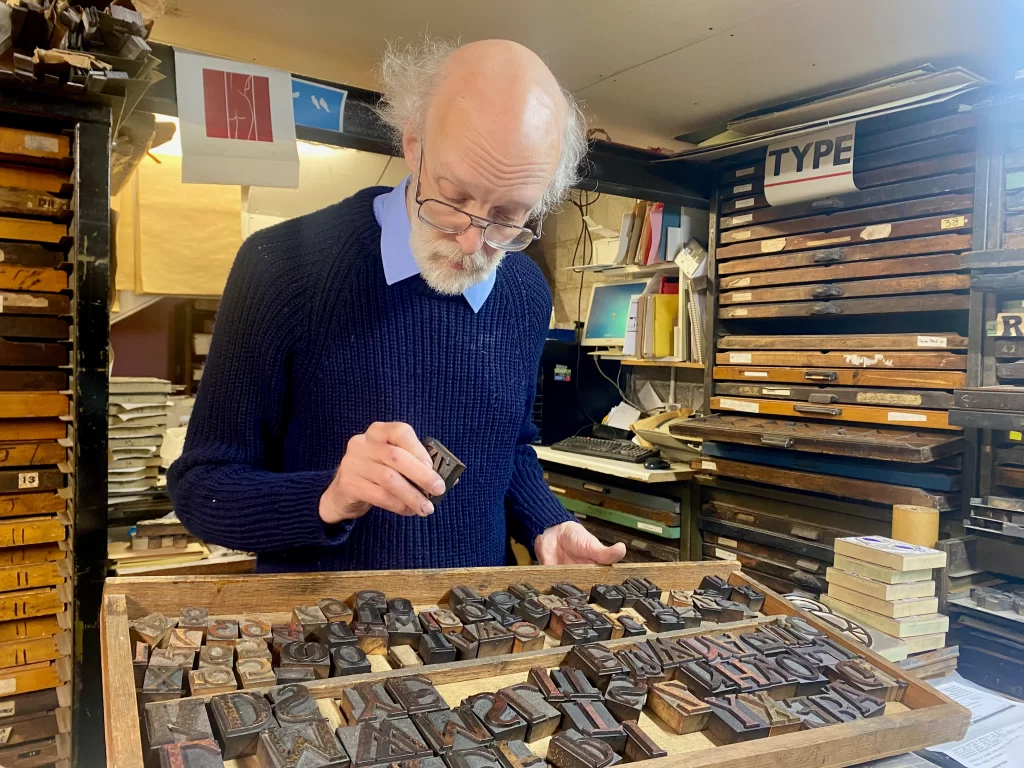
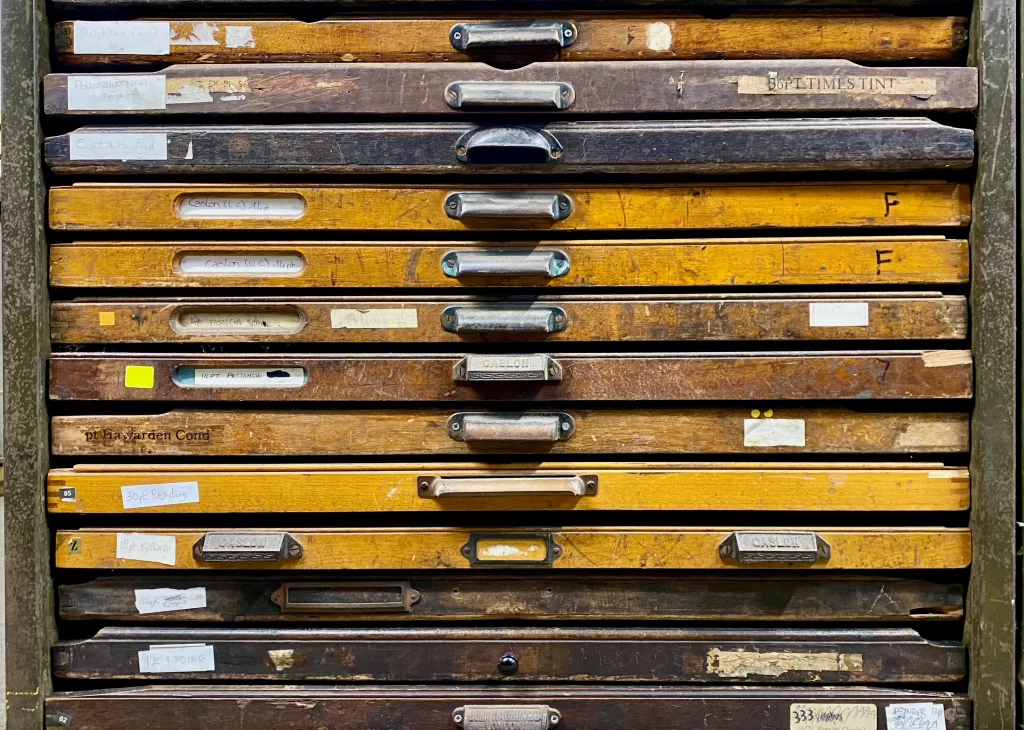
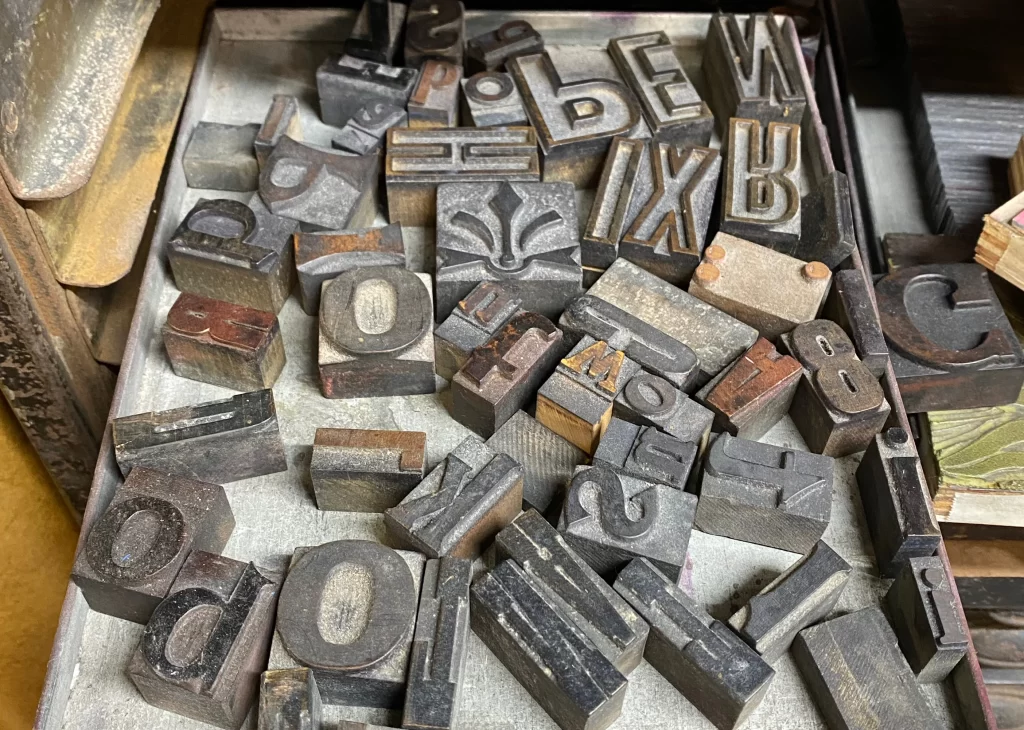
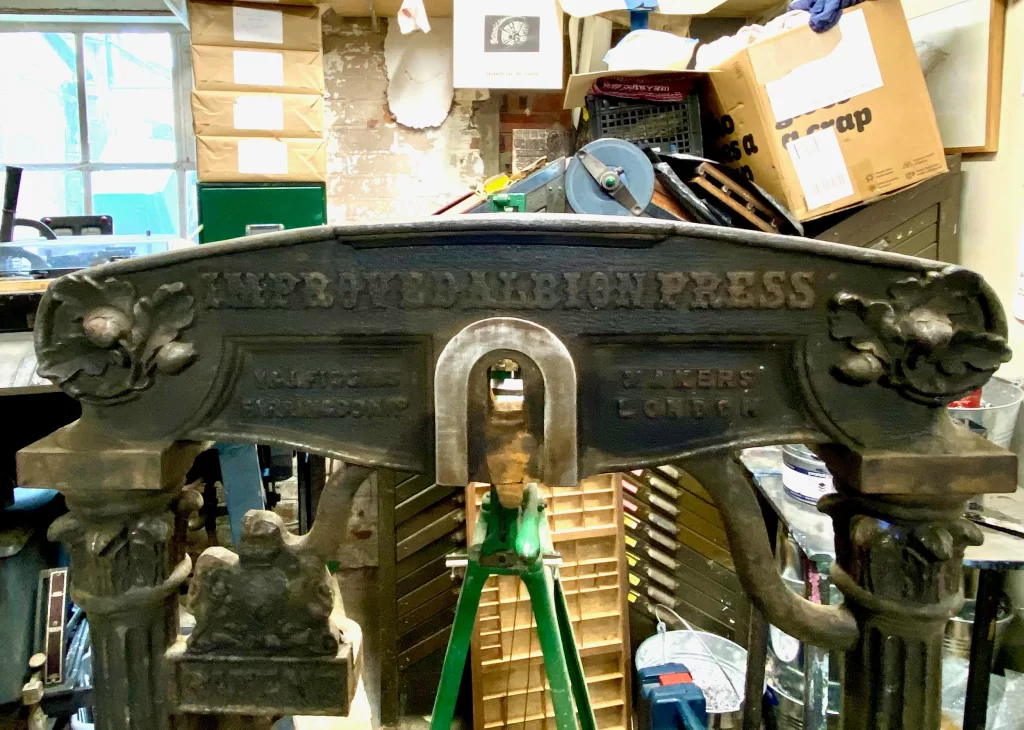

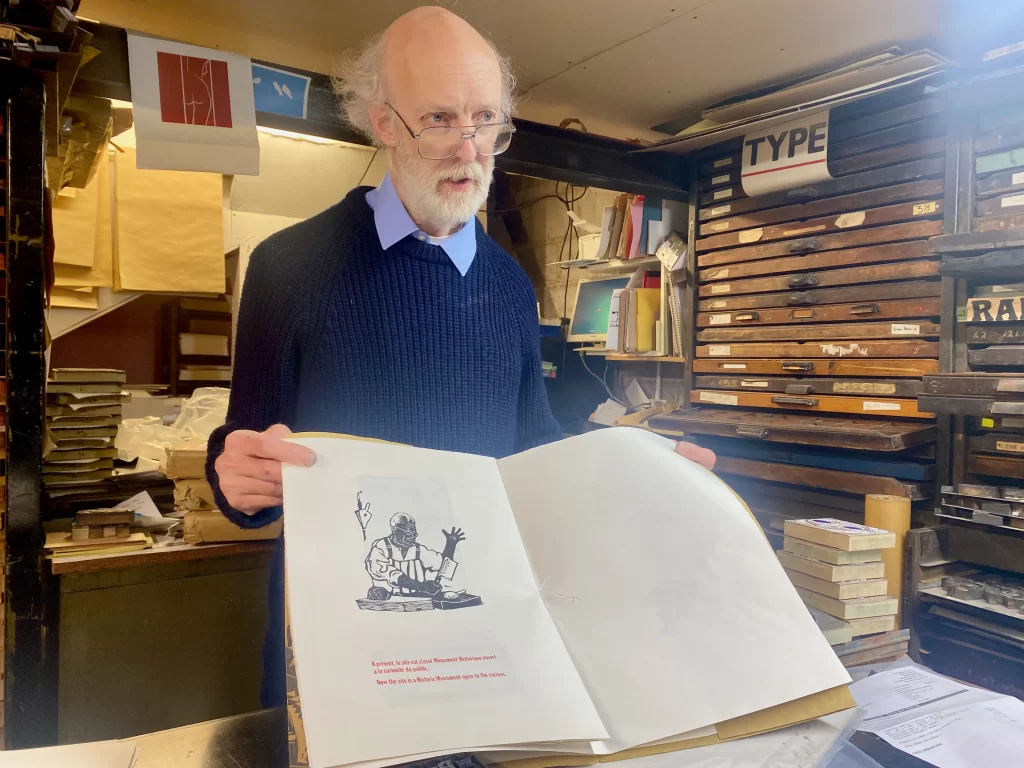
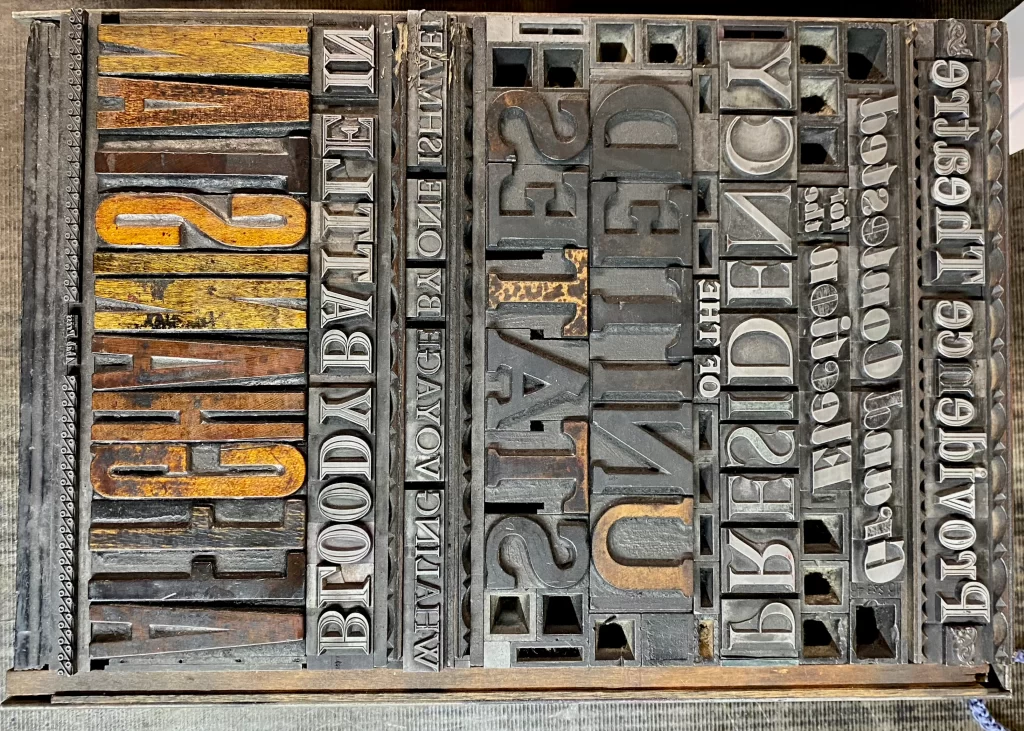
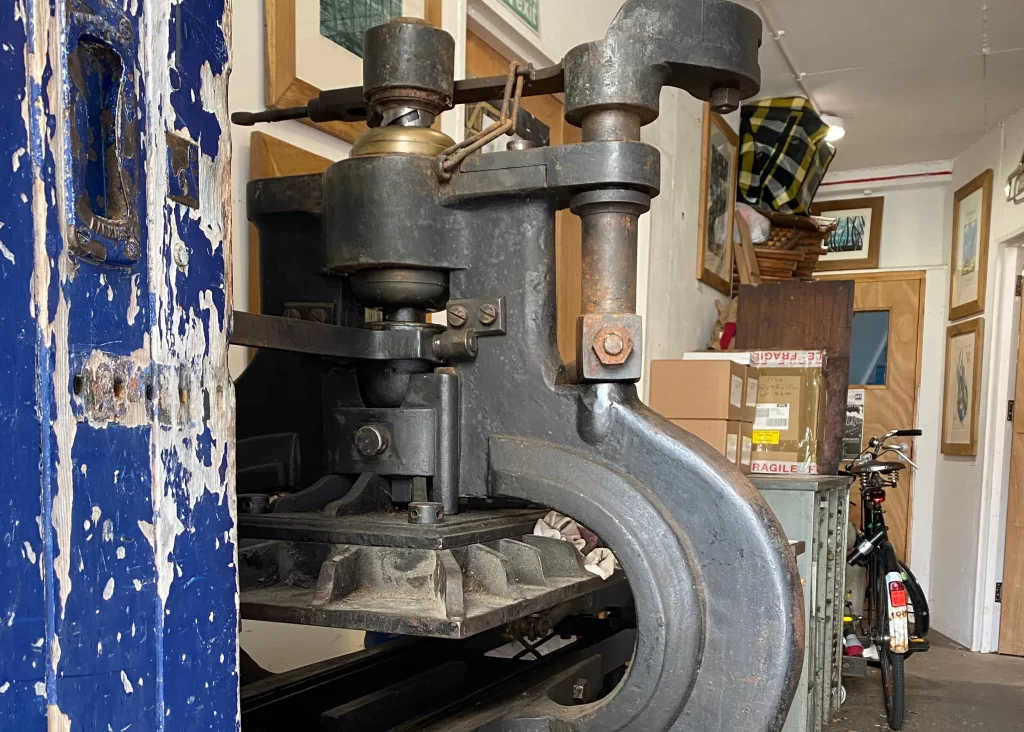

Richard with Stanley Donwood. Stanley created large, limited edition prints of Fleet Street for St Bride Foundation one of whose aims is to preserve the printing heritage of the street.
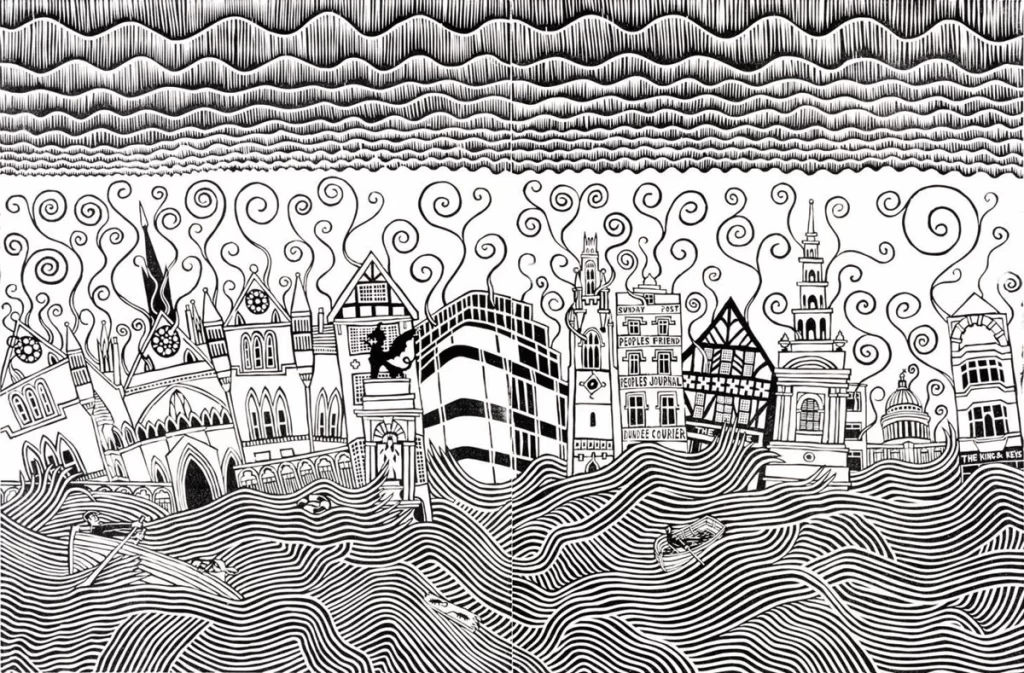
The finished piece.
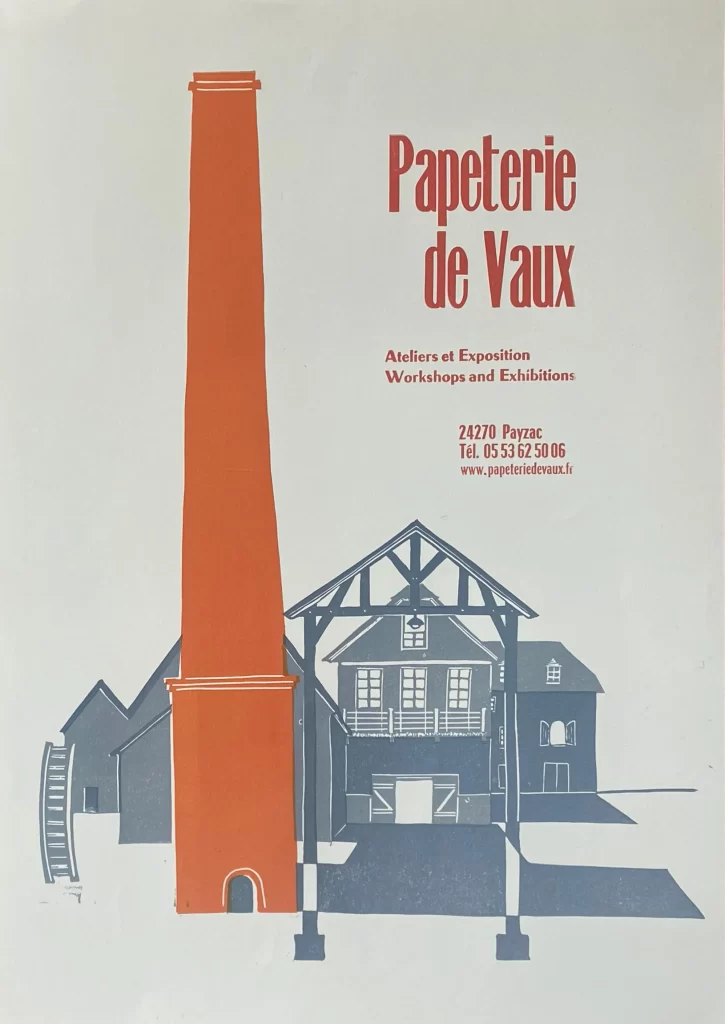
Papeterie de Vaux in the Dordogne, once a paper mill producing brown paper, made from ryegrass a byproduct of the rye grown to make bread, and used by butchers for wrapping meat. The restored print shop here is where Richard goes every year to produce work in the French sunshine with two of the artists from Hurst Street Studios, Rosie Fairfax-Cholmeley and Robin Wilson.
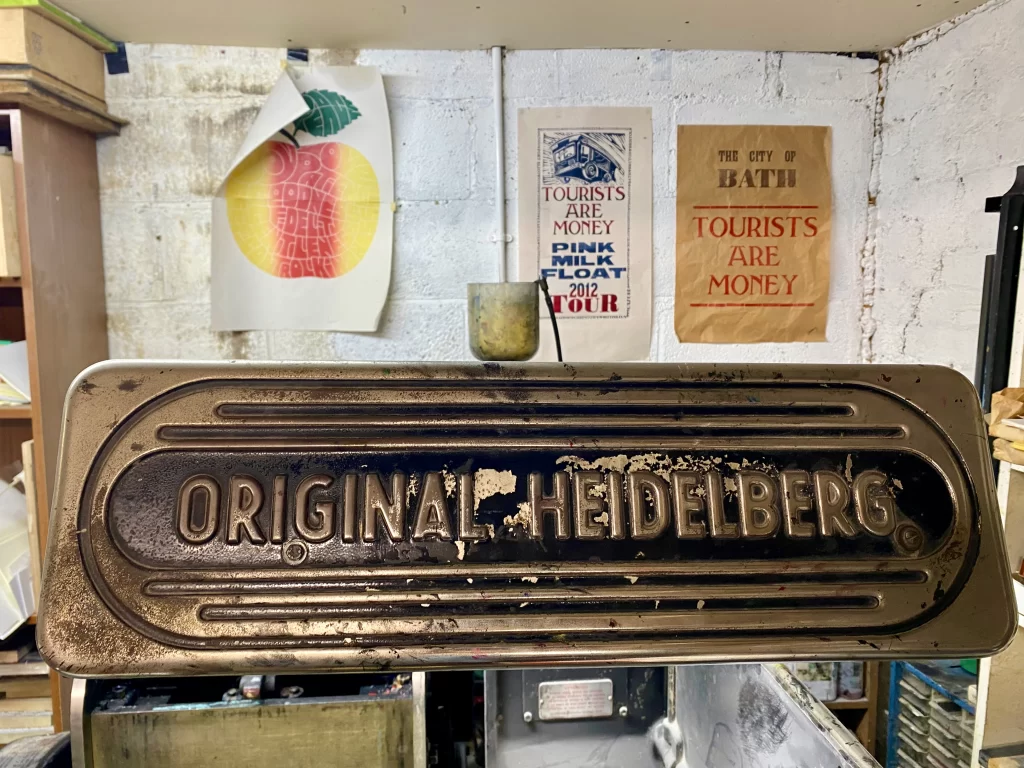

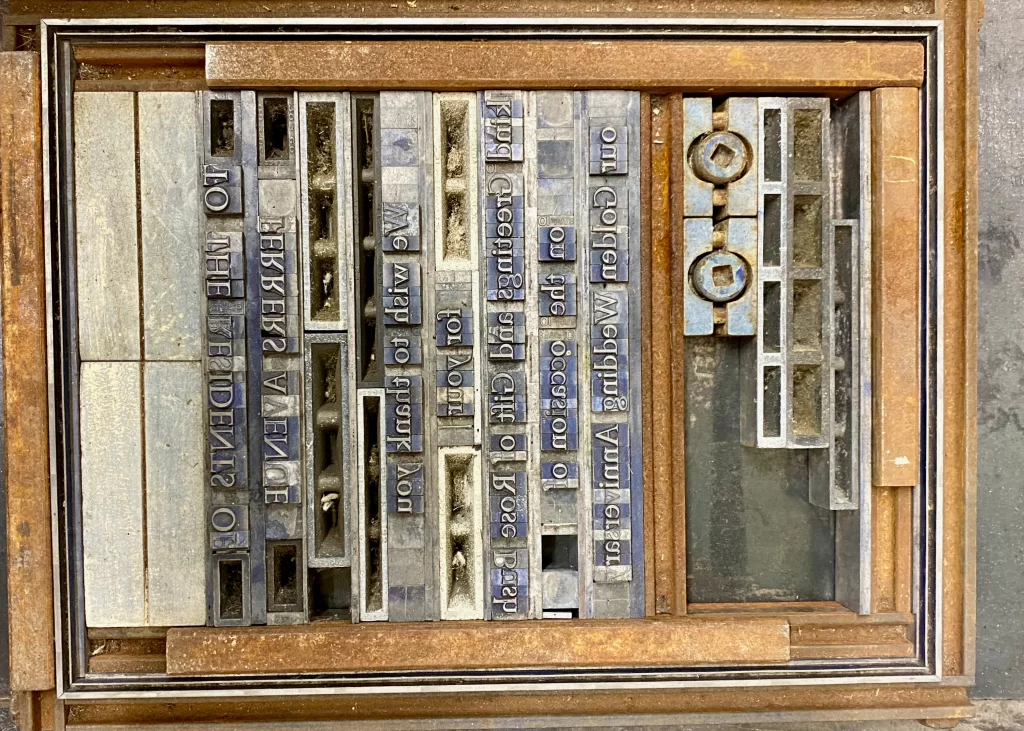
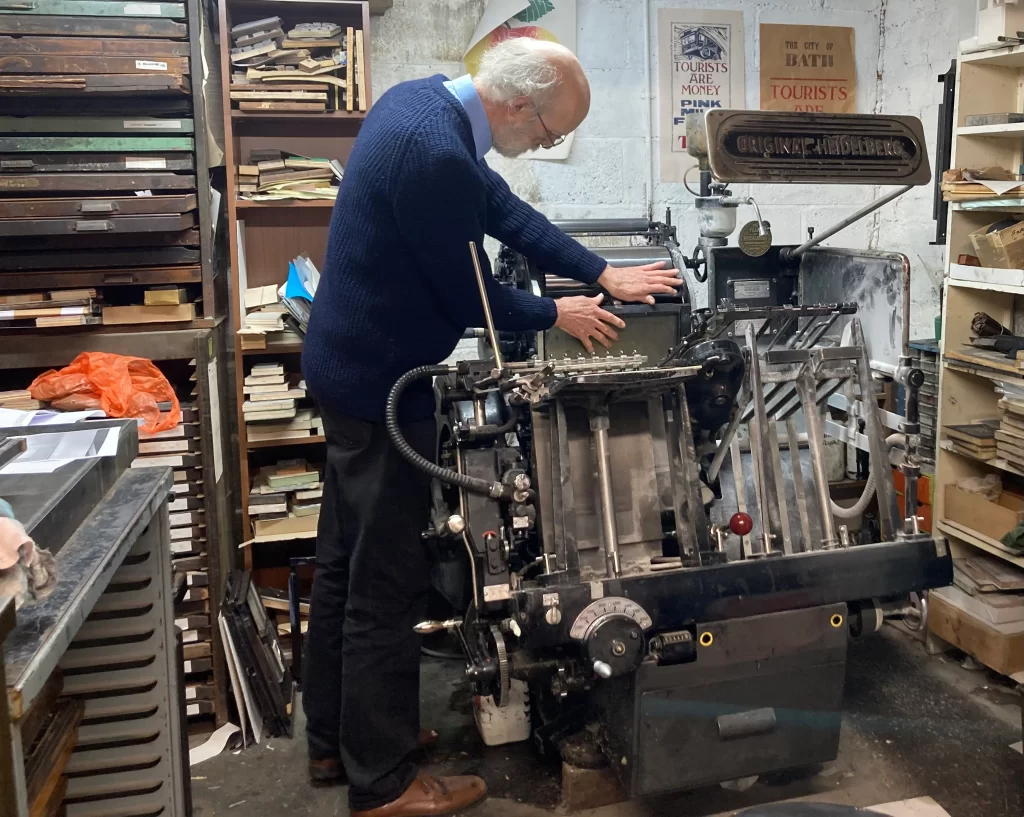
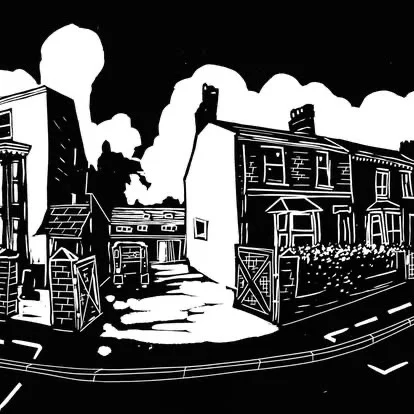
Hurst Street Studios from a linocut by Robin Wilson.

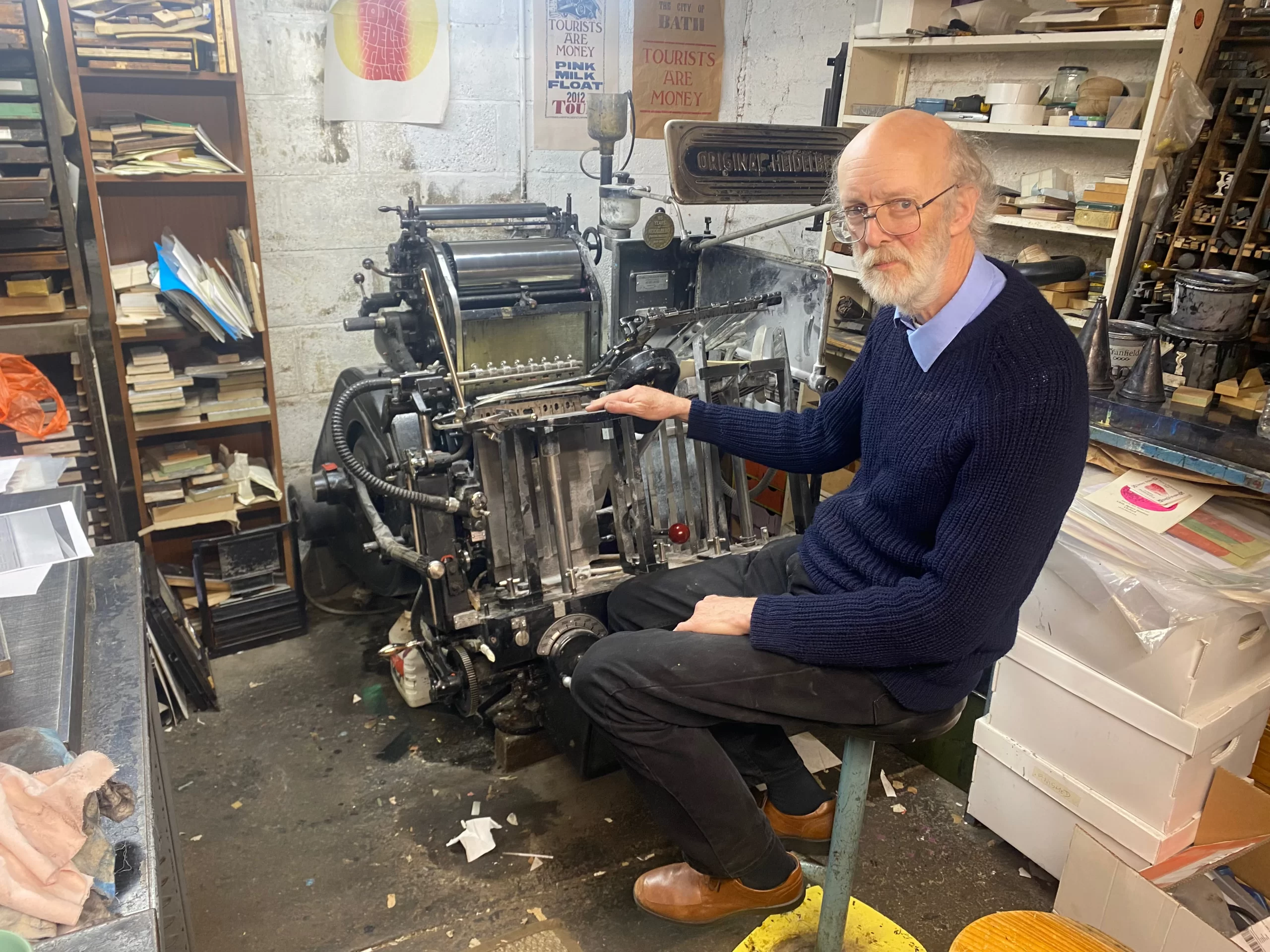
5 Comments
Join the discussion and tell us your opinion.
Great stuff as ever.Keep on digging out the characters…
Love this! And what a wonderful set of printing expressions. I remember using the ancient press that used to kept in the Clarendon Building as part of my Master of Studies course, and learning that upper/lower case fact. Most satisfying!
Fascinating and so lively! Wonderful to see someone so meticulous and committed to working with artists to produce visually intriguing, unique works. I look forward to seeing Richard’s work at the Ashmolean. Thank you!
Perfection. A joy to see something being done Properly. (The capital is deliberate)
Wonderful, a beautiful piece!